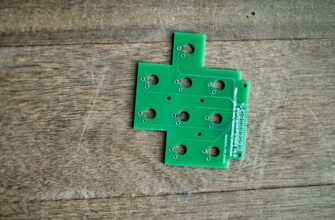## Introduction: Why Cold Wallets Matter for Bitcoin Beginners
As a new Bitcoin investor, protecting your cryptocurrency is non-negotiable. Cold wallets (hardware wallets) keep your Bitcoin offline, away from hackers—unlike risky exchange storage or software “hot wallets.” This guide reveals the best beginner-friendly cold wallets, balancing ironclad security with simple setup. You’ll learn key features to prioritize and avoid common security pitfalls.
## What Exactly is a Bitcoin Cold Wallet?
A cold wallet is a physical device storing your Bitcoin’s private keys offline. Unlike hot wallets connected to the internet, cold wallets only go online briefly during transactions, drastically reducing hack risks. Think of it as a vault versus a wallet in your pocket. For beginners, this means:
– **Zero exposure** to online threats like malware
– **Full control** over your assets (not held by third parties)
– **Recovery options** via seed phrases if the device is lost
## Top 3 Beginner-Friendly Bitcoin Cold Wallets (2024)
After testing security, usability, and support, these wallets stand out:
1. **Ledger Nano S Plus**
– **Why it’s great**: Affordable ($79), intuitive Ledger Live app, supports 5,500+ coins.
– **Best for**: First-time users wanting simplicity without sacrificing features.
2. **Trezor Model One**
– **Why it’s great**: Open-source software, large community support, easy touchscreen.
– **Best for**: Beginners valuing transparency and educational resources.
3. **BitBox02 Bitcoin-Only Edition**
– **Why it’s great**: Ultra-simple interface, microSD backup, focused solely on Bitcoin.
– **Best for**: Minimalists prioritizing Bitcoin security above all else.
## Must-Have Features for Your First Cold Wallet
Avoid overwhelm by prioritizing these essentials:
– **User-Friendly Setup**: Clear instructions and companion apps (e.g., Ledger Live)
– **Recovery Seed Backup**: 12-24 word phrase to restore funds if lost
– **Physical Durability**: Water/resistant casing
– **Price**: $50-$150 range for reliable entry-level options
– **Reputable Brand**: Avoid obscure brands; stick to established names with audits
## Setting Up Your Cold Wallet: 4 Simple Steps
1. **Unbox & Connect**: Plug the device into your computer or phone.
2. **Generate Seed Phrase**: Write down the 12-24 recovery words on paper (never digitally!).
3. **Set PIN**: Create a device access code.
4. **Transfer Bitcoin**: Use the wallet’s app to receive coins from exchanges.
⚠️ **Critical Tip**: Test recovery with your seed phrase before funding the wallet!
## Frequently Asked Questions (FAQ)
**Q: Are cold wallets worth it for small Bitcoin holdings?**
A: Absolutely. Even $100 in Bitcoin can be stolen from hot wallets. Cold wallets cost less than 10% of that for basic security.
**Q: Can I lose Bitcoin if my cold wallet breaks?**
A: No! Your coins live on the blockchain. Use your recovery seed phrase on a new device to regain access.
**Q: How often should I use my cold wallet?**
A: Only for transferring large sums or long-term storage. Daily spending? Use a hot wallet with small amounts.
**Q: Are these wallets compatible with iPhones/Android?**
A: Yes. Most connect via USB-C or Bluetooth and work with mobile apps (e.g., Ledger Live, Trezor Suite).
## Final Thoughts: Start Securely
Choosing a cold wallet is your first act as a responsible Bitcoin owner. The Ledger Nano S Plus offers the best balance for most beginners, while Trezor and BitBox02 excel for specific needs. Remember: security trumps convenience. Invest an hour setting up your wallet—it’s cheaper than losing your crypto to hackers. Your future self will thank you.








